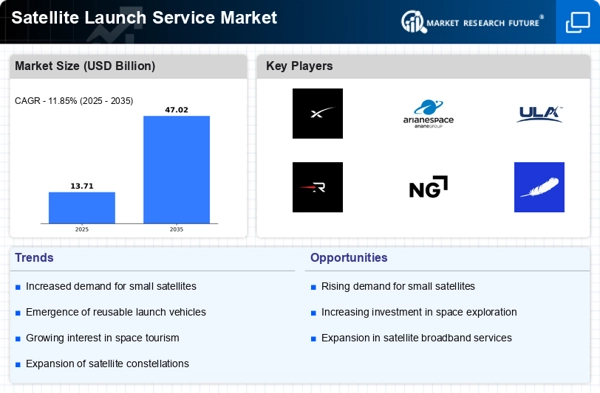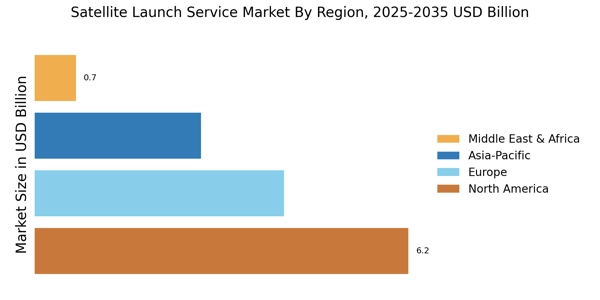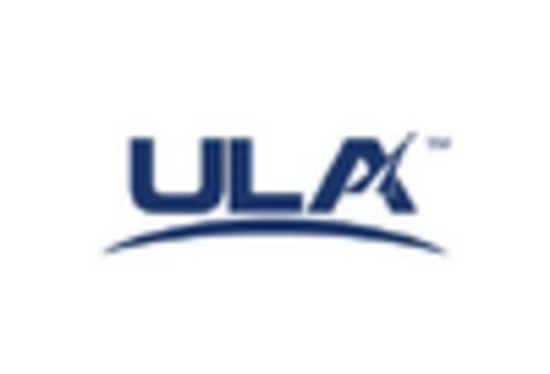The Satellite Launch Service Market is currently characterized by a dynamic competitive landscape, driven by technological advancements and increasing demand for satellite deployment. Key players such as SpaceX (US), Arianespace (FR), and Rocket Lab (NZ) are at the forefront, each adopting distinct strategies to enhance their market positioning. SpaceX (US) continues to leverage its reusable rocket technology, which not only reduces launch costs but also increases launch frequency, thereby solidifying its dominance. Arianespace (FR), on the other hand, focuses on strategic partnerships and expanding its service offerings to cater to a diverse clientele, including government and commercial sectors. Rocket Lab (NZ) emphasizes innovation in small satellite launches, positioning itself as a leader in the small satellite market segment, which is experiencing rapid growth. Collectively, these strategies contribute to a competitive environment that is increasingly focused on efficiency, cost-effectiveness, and technological prowess.
In terms of business tactics, companies are increasingly localizing manufacturing and optimizing supply chains to enhance operational efficiency. The market structure appears moderately fragmented, with several players vying for market share while also collaborating through strategic alliances. This collective influence of key players fosters a competitive atmosphere where innovation and customer-centric solutions are paramount.
In September 2025, SpaceX (US) successfully launched its Starship rocket, marking a significant milestone in its mission to facilitate interplanetary travel. This event underscores SpaceX's commitment to pushing the boundaries of space exploration and its strategic focus on developing next-generation launch vehicles. The successful test not only enhances its reputation but also positions the company to capture future contracts for deep-space missions, potentially reshaping the competitive landscape.
In August 2025, Arianespace (FR) announced a partnership with a leading telecommunications company to develop a new satellite constellation aimed at enhancing global internet coverage. This strategic move reflects Arianespace's intent to diversify its service offerings and tap into the burgeoning demand for satellite-based internet services. By aligning with a telecommunications giant, Arianespace is likely to strengthen its market position and expand its customer base.
In July 2025, Rocket Lab (NZ) unveiled its plans to expand its launch capabilities by introducing a new rocket variant designed for heavier payloads. This initiative is indicative of Rocket Lab's strategy to capture a larger share of the commercial satellite launch market, which is increasingly leaning towards larger and more complex payloads. The introduction of this new variant could potentially enhance Rocket Lab's competitive edge and attract a broader range of clients.
As of October 2025, the Satellite Launch Service Market is witnessing trends that emphasize digitalization, sustainability, and the integration of artificial intelligence in launch operations. Strategic alliances are becoming increasingly pivotal, as companies seek to combine resources and expertise to navigate the complexities of the market. Looking ahead, competitive differentiation is likely to evolve from traditional price-based competition to a focus on innovation, technological advancements, and supply chain reliability, suggesting a transformative shift in how companies position themselves in this rapidly evolving landscape.


















Leave a Comment